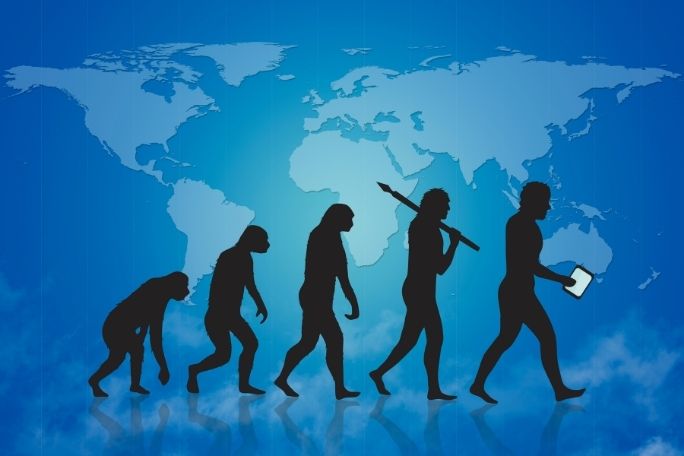Lesson summary
Students imagine how humans will evolve in the future according to a range of selective agents using their knowledge of evolutionary processes.
Learning intentions:
Students will...
- understand what evolution is, how it occurs and how it might apply to humans.
Success criteria:
Students can...
- hypothesise agents affecting future human evolution and how speciation might occur in humans in the future.
Lesson guides and printables
Curriculum links
Select your curriculum from the options below.
Lesson details
Curriculum mapping
Australian Curriculum (v9.0) content descriptions:
Science:
Students learn to:
- use the theory of evolution by natural selection to explain past and present diversity and analyse the scientific evidence supporting the theory (AC9S10U02)
Syllabus Outcomes: SC5-5WS, SC5-6WS, SC5-7WS, SC5-14LW.
General capabilities: Critical and Creative Thinking.
Relevant parts of Year 10 achievement standards:
By the end of Year 10 students explain the processes that underpin heredity and genetic diversity and describe the evidence supporting the theory of evolution by natural selection. They sequence key events in the origin and evolution of the universe and describe the supporting evidence for the big bang theory.
Resources required
- A device capable of showing a video
- Art materials - coloured pencils and textas
- Factsheet - Human evolution factsheet (optional)
- Factsheet - Where do you come from (optional)
- Student Worksheet - one copy per student
- White paper
- Writing materials - pen and lined paper
Skills
This lesson is designed to build students’ competencies in the following skills:
- communication
- creativity
- creative thinking
- critical thinking
Additional info
Level of teacher scaffolding: Medium - facilitate discussion and oversee activity.
This is an original Cool+ lesson.
Related professional learning
Quick summary: Gain an overview of the Big History story, why it is important for Primary education and the cross-curriculum priority of Sustainability, and how to apply a critical, inquiry-based perspective to science education across all areas of the curriculum. There will be opportunities to learn about a range of tools, tips, lessons and resources that focus on a multi-disciplinary approach.


Welcome back!
Don't have an account yet?
Log in with:
Create your free Cool.org account.
Many of our resources are free, with an option to upgrade to Cool+ for premium content.
Already have an account?
Sign up with:
By signing up you accept Cool.org's Terms and Conditions(Opens in new tab) and Privacy Policy(Opens in new tab).